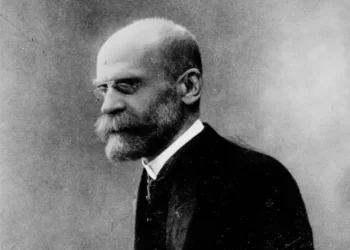Table of Contents
- Definition and Conceptual Framework
- Types of Hidden Crime
- Causes and Contributing Factors
- Implications of Hidden Crime
- Methodologies for Uncovering Hidden Crime
- Conclusion
Hidden crime, also known as invisible or dark figure crime, refers to illegal activities that go undetected, unreported, or unrecorded by official law enforcement agencies. This concept is essential in criminology and sociology, as it reveals the limitations and biases of crime statistics and the criminal justice system. The study of hidden crime exposes the gaps in our understanding of crime prevalence and the factors influencing the likelihood of certain crimes remaining concealed. This essay aims to provide a comprehensive overview of hidden crime, its types, causes, implications, and the methodologies used to uncover its prevalence.
Definition and Conceptual Framework
Understanding Hidden Crime
Hidden crime encompasses a range of activities that escape detection by formal control systems. These crimes are not reflected in official crime statistics, creating a discrepancy between actual crime rates and reported crime rates. Hidden crime can be further categorized into two main types: undetected and unreported crime.
Undetected Crime
Undetected crimes are those that remain unnoticed by both victims and authorities. This includes activities like minor frauds, some forms of cybercrime, and crimes occurring in secluded areas without witnesses.
Unreported Crime
Unreported crimes are those known to the victim but not reported to law enforcement. Common examples include domestic violence, sexual assault, and child abuse. Factors influencing the decision not to report a crime can include fear of retaliation, shame, distrust in the police, or a belief that the crime is too trivial to warrant attention.
Theoretical Perspectives
Several theoretical perspectives help explain the phenomenon of hidden crime:
Social Constructionism
From a social constructionist viewpoint, crime is not an objective phenomenon but a social construct. This perspective emphasizes the role of societal norms, values, and power dynamics in defining what is considered a crime. Hidden crime, therefore, may result from societal attitudes that marginalize certain behaviors or populations, leading to underreporting or lack of detection.
Labeling Theory
Labeling theory posits that the societal reaction to certain behaviors influences whether those behaviors are recognized as crimes. Individuals or groups that are not labeled as deviant may engage in criminal activities without attracting attention. This can result in certain crimes, particularly those committed by high-status individuals, remaining hidden.
Routine Activity Theory
Routine activity theory suggests that crime occurs when there is a convergence of motivated offenders, suitable targets, and lack of capable guardianship. Hidden crime may arise when one of these elements is absent or when capable guardianship is ineffective, such as in cases of institutional abuse or white-collar crime.
Types of Hidden Crime
Domestic Violence and Intimate Partner Violence
Domestic violence is a pervasive yet often hidden crime. Many victims do not report incidents due to fear of retaliation, financial dependency, or emotional attachment to the perpetrator. Additionally, societal stigma and victim-blaming attitudes can discourage reporting.
Sexual Assault
Sexual assault, particularly rape, is another crime with high levels of underreporting. Victims may feel ashamed, fear not being believed, or dread the legal and emotional challenges of pursuing justice. Moreover, in some cultures, discussing sexual violence is taboo, further contributing to its hidden nature.
Child Abuse
Child abuse, encompassing physical, emotional, and sexual abuse, often goes unreported due to the vulnerable position of children. Children may lack the understanding or means to report abuse, and when they do, adults may dismiss or conceal the reports to protect family reputation or due to disbelief.
White-Collar Crime
White-collar crime includes financial fraud, embezzlement, insider trading, and other crimes committed by individuals in positions of power. These crimes often go undetected due to the sophisticated methods used to conceal them and the complex nature of the offenses, which can evade traditional law enforcement detection mechanisms.
Cybercrime
Cybercrime is a rapidly growing category of hidden crime. Many cybercrimes, such as identity theft, online fraud, and hacking, remain undetected due to the anonymity of the internet and the technical expertise required to uncover such activities. Victims may not realize they have been targeted or may not report the crime due to the perception that nothing can be done.








